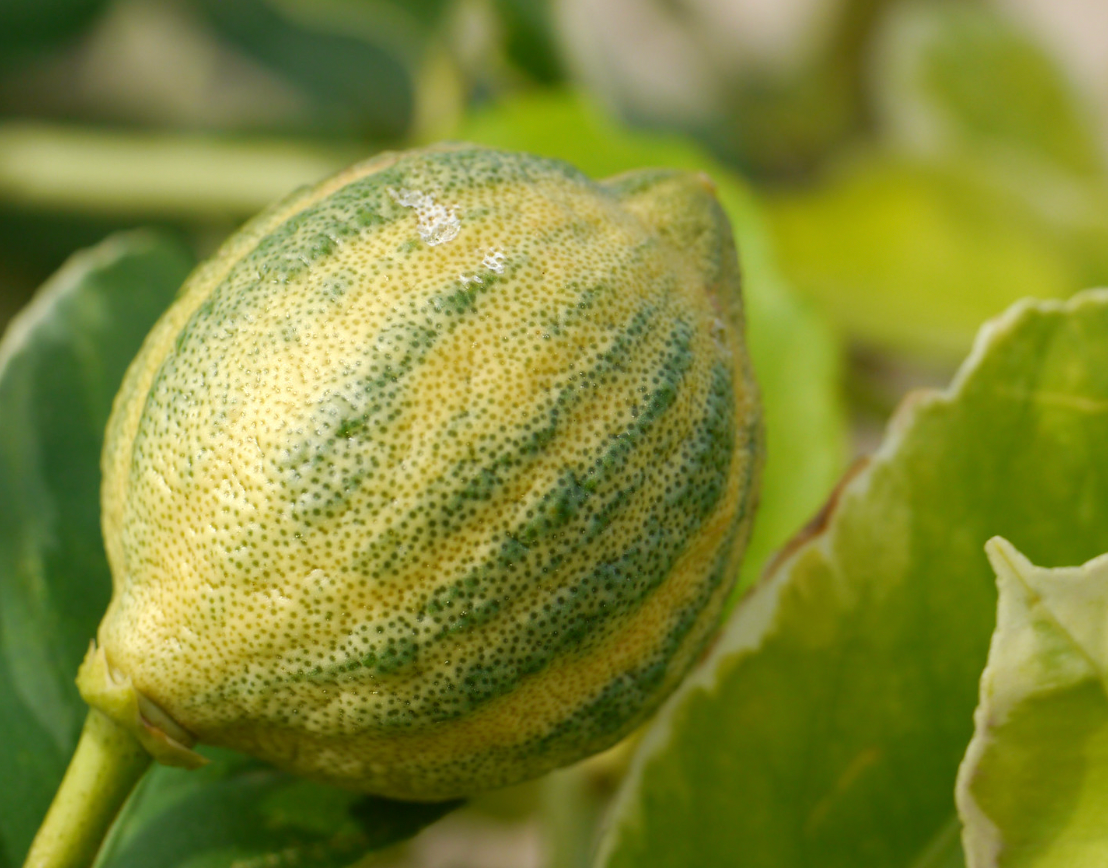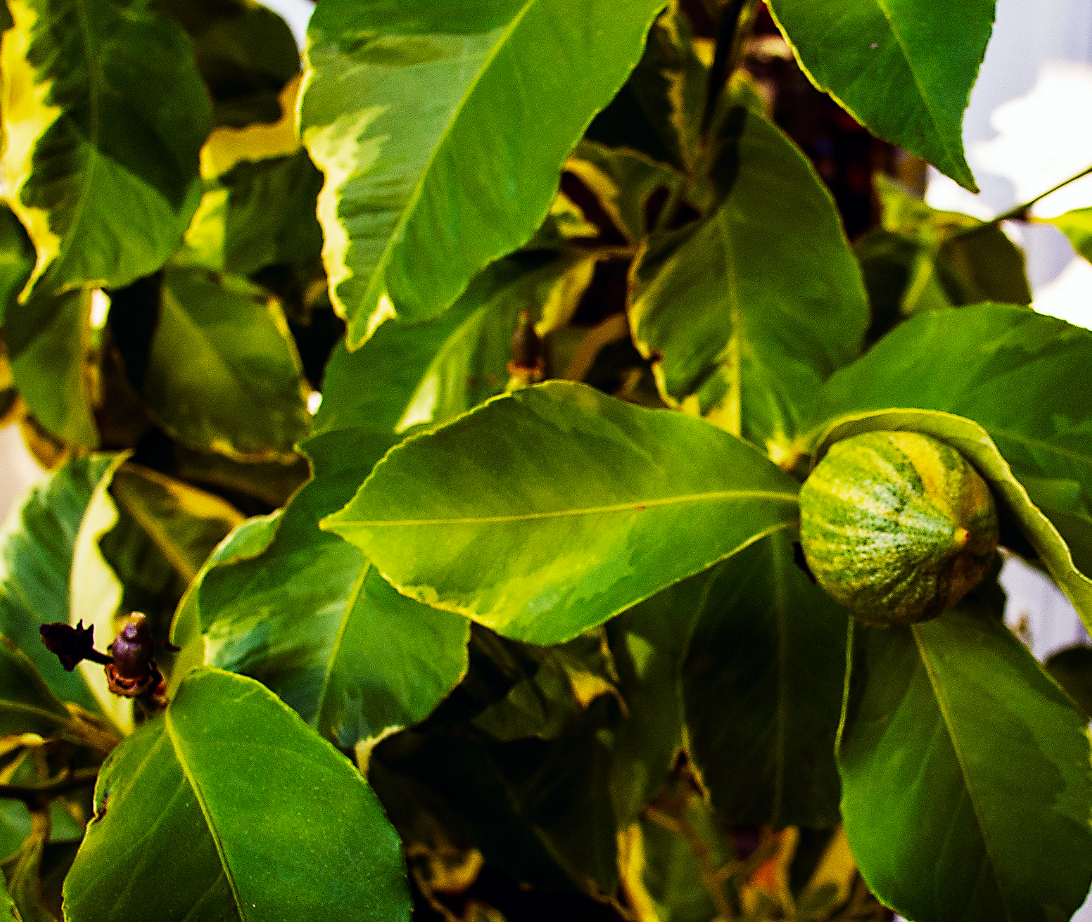Pink Lemonade Tree

Most people are accustomed to seeing yellow lemons, but pink lemons are just as delicious and nutritious. The pink lemonade tree has green and white variegated leaves. It grows magenta flower buds that turn pale pink when in bloom. Like the leaves, the fruit of the pink lemonade tree is also variegated, but its colors are yellow and green. That's why the species is also known as the variegated pink lemon tree. But how do you grow one? Well, here's everything you need to know.
Fast Facts for the Pink Lemonade Tree
| Common Name | Pink lemon tree, variegated pink lemon tree, eureka lemon tree |
|---|---|
| Scientific Name | Citrus limon |
| Harvest | November to March |
| Light | 8 hours of sunlight per day |
| Water | Require watering one to three times a week, depending on how quickly the soil dries |
| Soil | Grow best in loam soils with a pH of 5.5 to 6.5 |
| Fertilizer | Require a balanced fertilizer with a 10-10-10 or a fertilizer with a 2-1-1 ratio during summer and spring; fertilization is required every three to four months |
| Pests | Susceptible to attacks by Asian citrus psyllids, scales, aphids, thrips, and mites |
| Diseases | Affected by anthracnose and Phytophthora root rot |
| Growing Zone | 9 to 10 |
Table of Contents
Source: Kristi
Everything You Need to Know to Take Care of The Pink Lemonade Tree
The variegated lemon trees have a mature height of 10 to 15 feet with a width of 6 to 8 feet. They need full to partial sunlight and have a moderate growth rate.
You can buy a pink lemon tree in semi-dwarf or dwarf rootstock. The good news is that these trees are self-fertile. That means you don't need to have two trees to successfully pollinate flowers and fruit.
However, they are variegated, so they do not have as much chlorophyll as non-variegated plants. Due to lower chlorophyll content, these trees do not photosynthesize as much and grow slower than non-variegated lemon trees.
Since these trees can produce fruit in the first year of growth, they're a good addition to an impatient gardener's yard. Here's what you need to know about pink lemonade tree care.
Planting
To plant a variegated pink lemon, you need to purchase its saplings from your local nursery. Plant the tree in any month from April to August for the best growth.
You can either plant it directly into the ground or in a container. If you choose the latter, the pot should have a capacity of at least 10 gallons. Regardless of your choice, do not plant a variegated pink lemon tree if the temperature is over 100 degrees Fahrenheit.
Where
It's best to plant variegated pink lemon trees as grafted trees. Plant the grafted tree in a sunny spot in your garden while leaving about 4 inches of the plant's rootstock above the soil.
If you're planting directly into the soil, make sure it's well-drained. Keep potted plants in an area where they get at least 8 hours of sunlight daily.
Care and Maintenance
Growing a variegated lemon tree is relatively easier than many other trees. If you fulfill the tree's light, soil, water, and fertilizing requirements, expect to see fruit in just a year.
Sun and Temperature
A variegated lemon tree can grow in partial and full sun. But it thrives in full sunlight and produces more fruit. Also, the variegation on the leaves requires the tree to be in sunlight for a longer time to photosynthesize enough for its growth. On average, your variegated lemon tree should get 7 to 8 hours of sunlight.
Pink lemon trees do not survive in cold regions. They prefer a temperature range of 45 to 55 degrees Fahrenheit in winter and 85 to 95 degrees Fahrenheit in summer.
If you live in a colder region and want to grow a pink lemon tree, you must bring it inside during the frost season. A variegated pink lemon tree can die when kept in freezing temperatures for long periods.
These trees are better at tolerating heat, often thriving in temperatures over 100 degrees Fahrenheit too. However, long-term exposure can result in sunburn or sunscald.
If your area gets extremely hot during summer, use a shade cloth to protect your pink lemon trees. Heat or cold stress can result in premature fruit drop and tree death.
Water and Humidity
The amount of watering variegated eureka lemon trees requires depends on soil moisture. In dry periods, water the plant once a week. The key is to keep the soil wet but not soggy.
Instead of watering with a can, use drip irrigation or a soaker hose. These irrigation methods protect the trunk from getting wet or causing runoff.
You don't have to water a variegated pink lemon tree during wet periods excessively. Only water if the soil surface is dry. That can range from one to three times a week. You can use drip irrigation for trees if you need an efficient way to water them.
However, if you've planted your pink variegated lemon tree in a pot, it will need frequent watering. Water the soil surface until it is fully saturated. Let the soil dry before you water again.
A potted variegated lemon tree may have to be watered up to thrice a week. Like in-ground plants, do not wet the tree's trunk.
Soil
Part of the reason pink eureka trees are so common in gardens is that they can grow in different soils. The only requirement is for the soil to be well-draining.
For optimal growth, choose loam soil. It will retain nutrients and water efficiently. The soil's pH should be slightly acidic, between 5.5 and 6.5
You can increase the soil's acidity by adding aged manure or compost. You can also add soil amendments, like bone meal or lime, to further regulate growth.
Fertilizing
Variegated lemon trees do not need to be fertilized in winter or fall. A fertilizer application during this time will result in a growth spurt, making new foliage susceptible to frost damage. Instead, you can fertilize them in summer or spring.
There are two types of fertilizers you can use on a variegated lemon tree:
- Balanced: Such a fertilizer has an equal concentration of nitrogen, potassium, and phosphorus. Examples include fertilizers with NPK ratios of 10-10-10 or 20-20-20.
- Unbalanced: Alternatively, you can use a nitrogen-rich fertilizer with an NPK ratio of 12-6-6.
Try using a fertilizer with micronutrients like copper, iron, zinc, and magnesium. Here's how these micronutrients benefit a pink lemon tree:
- Copper: Copper is among the eight essential micronutrients for plants. It is a major component of many enzymes in the plant. Plus, copper is needed for seed production and chlorophyll synthesis.
- Iron: Like copper, iron is also important for chlorophyll production. Plants also need iron for many metabolic and enzymatic processes.
- Zinc: Plants deficient in size have reduced protein, chlorophyll, and carbohydrate production. Zinc is a necessary component of several plant metabolic reactions.
- Magnesium: A pink lemon tree needs magnesium for respiration and enzyme activation.
Pruning
When pruning a pink variegated lemon tree, the first thing to look for is suckers. These are small shoots that emerge from the rootstock.
You must remove the suckers from a pink lemonade tree, or otherwise, it will compete with the fruit-producing limbs for energy. It's quite easy to identify suckers, as they are not variegated.
The best time for major pruning of variegated pink lemon trees is during summer or spring. Do not prune the flower buds off, as it results in lower fruit production. Also, do not prune more than 1/3rd of the pink lemon tree.
Prune any broken, dead, or diseased branches immediately to prevent the spread of disease. Broken branches also sometimes act as pests' entry points, so removing them is important.
Remove branches growing inward toward the tree's center. Similarly, prune crossing branches as they will rub against each other and can cause serious injuries to the tree. Thin out weak branches and those growing in an awkward direction.
In most cases, the old fruit from pink lemon trees falls off itself. But if this doesn't happen, you should remove it during pruning.
Sanitize your pruning equipment to prevent spreading infections. If you use shears or loppers on a diseased branch, sanitize them in a mixture of bleach and water before using them on a healthy branch.

Source: Christensen
Propagation
There are three methods to propagate variegated lemon trees:
- Air layering
- Root cuttings
- Grafting
Air Layering
Air layering is a propagation technique that encourages root growth on the stems attached to the parent plants. Here's how to air-layer a pink lemonade tree:
- Select a healthy and straight stem amount a year or two old. Trim old leaves and side shoots from this stem.
- Create a 1-inch wound in the stem by cutting through a leaf bud. Cut at an angle to the shoot tip to form a tongue.
- Cover the wound's surface with a hormone-rooting compound.
- Apply moist sphagnum moss below the wound's tongue.
- Take a black plastic and use it to wrap the wounded section loosely. Use an adhesive tape to seal one end.
- Cover the plastic with moist sphagnum moss, forming a 4-inch thick layer.
- Seal the plastic's other end with adhesive tape.
It will take about a year for new roots to form in the wound area. You can open the plastic wrap to check for rooting occasionally.
When you see the roots, remove the black plastic. Cut the stem under this section and plant it in a suitable soil mix. Do not remove the sphagnum moss from the steam. Let it grow in the pot until it is big enough for plating in the soil outside.
Grafting
If you want a disease-resistant pink variegated lemon tree, choose grafting as the method of proportion. You can use the following rootstocks:
- Flying Dragon
- Trifoliate
- C35
Allow the rootstock to become thick. Then, graft it through the chip budding method.
Rooted Cuttings
Another way to propagate a eureka lemon tree is to take a cutting with at least 2 or at most 5 nodes or leaves. Apply a rooting hormone to the cutting and keep it in a humid environment.
When the cutting forms a root system, plant it in a pot. Do not plant it directly into the soil since it won't be as disease-resistant or cold-tolerant as a grafted pink lemon tree.
Harvesting and Storing
When you harvest a eureka lemon tree will determine the fruit's acid content. If you harvest a tree early in the fall, it will be more acidic than a pink lemonade tree harvested later in the season.
Harvesting
You can determine the harvesting time based on the fruit's color. Harvest the fruit when the peel turns bright yellow. At the time of harvest, the fruit's variegation also fades a bit.
If you want the fruit to turn pink, let it hang on the tree for a bit longer. Pink lemons taste quite sweet as they are not as acidic as yellow lemons.
Twist the fruit and pull it off gently. Remember to wear gloves and long-sleeved shirts, as lemon trees have thorns.
You can also use pruners to remove the fruit. Wash the harvested lemons with a mixture of water and soap.
Storing
It's important to remember that the lemons you harvest from your pink lemon tree will not be fresh as long as the fruits from the store stay. You can store lemons in the refrigerator for up to 3 weeks or at room temperature for a week.
If you want to store pink lemons for a longer period, dehydrate or freeze them. Here are some ways to store lemons:
- Extract the juice and keep it in the refrigerator for months.
- Fill ice cube trays with lemon juice to freeze.
- Dehydrate slices of lemon and store them in airtight containers. These can be used in teas and desserts.
- Make and keep lemon syrup for up to two weeks.
Did you know? Pink lemonade was created over 100 years before Pink lemons were discovered.
Common Issues With Pink Lemonade Trees
Like any other fruit tree, the variegated eureka lemon trees are also prone to some growing problems and diseases.
Growing Problems
There are no serious growing problems for variegated pink lemon trees. The only issue is that most people grow the plant for its ornamental value. As a result, they may plant the tree in a shaded spot.
A pink lemonade tree growing in partial shade will produce little to no fruit. You can resolve this issue by moving the variegated eureka lemon tree to a sunny spot.
Pests
Many citrus tree pests affect the pink eureka lemon tree. Here are some of them.
Mites
These arachnids damage the leaves, causing premature drop. Since they're very small, it's hard to notice them until they're present in abundance. By that time, management becomes difficult.
You can prevent a mite infestation by following good cultural practices. Also, apply insecticidal soaps and horticultural oils to remove heavy mite infestations.
Thrips
Thrips are small insects that damage the flowers and leaves of pink lemonade trees. They cause fruit scarring and curling in the long run.
Managing a thrip infestation is quite hard. But you can prevent infestations by installing insect screens around new foliage.
Aphids
Aphids are small yellow, black, green, or orange sap-sucking insects that deform leaves. Natural predators, like ladybugs, are the best way to manage aphids in a lemon tree.
You can also apply insecticidal soaps or use a strong water stream to remove aphids from your variegated pink eureka tree.
Diseases
Overwatering your eureka lemon tree can make it susceptible to anthracnose diseases. Symptoms include:
- Fruit decay
- Twig dieback
- Leaf drop
- Dark leaf spots
- Twig spots
Remove infected foliage to prevent the spread of anthracnose to healthy branches.
Citrus greening disease, or Huanglongbing, is another problem for pink lemon trees since it's not curable. Common symptoms are:
- Sapling death
- Deformed fruit
- Smaller than average fruit
- Discolored fruit
- Leaf yellowing
The Asian Citrus Psyllid is a citrus pest that spreads this disease. Reducing the incidence of this insect can help slow down disease progression.
But if the disease has spread to major parts of the tree, it's best to remove the whole plant. Huanglongbing can also spread from infected grafts to healthy saplings. Make sure the rootstock you use comes from a clean and certified nurse stock.
Pink lemon trees are also susceptible to Phytophthora, a root disease that makes the foliage pale and weak. Prevent this disease by following good watering practices, such as not letting the trunk get wet. Some microbial products have also been created to make citrus plants immune to this disease.
Sweet New Earth's Final Word On Pink Lemonade Trees
Pink Lemonade trees are some of the most fun trees to plant. They aren't extremely difficult to maintain, and you can expect to harvest a delicious fruit each year, and most normal people have no idea that pink lemonade trees are even a real thing. You can brag to your gardening cohorts that you have a pink lemonade tree, and they do not.
FAQs

Christina Hernandez
Christina has done most of her research on environmental science but recently has changed her focus towards sustainable forestry. She has a passion for the outdoors and wants to spread that passion to the world.
Join our community!
Join to receive guides, insights, and the latest gardening deals!
